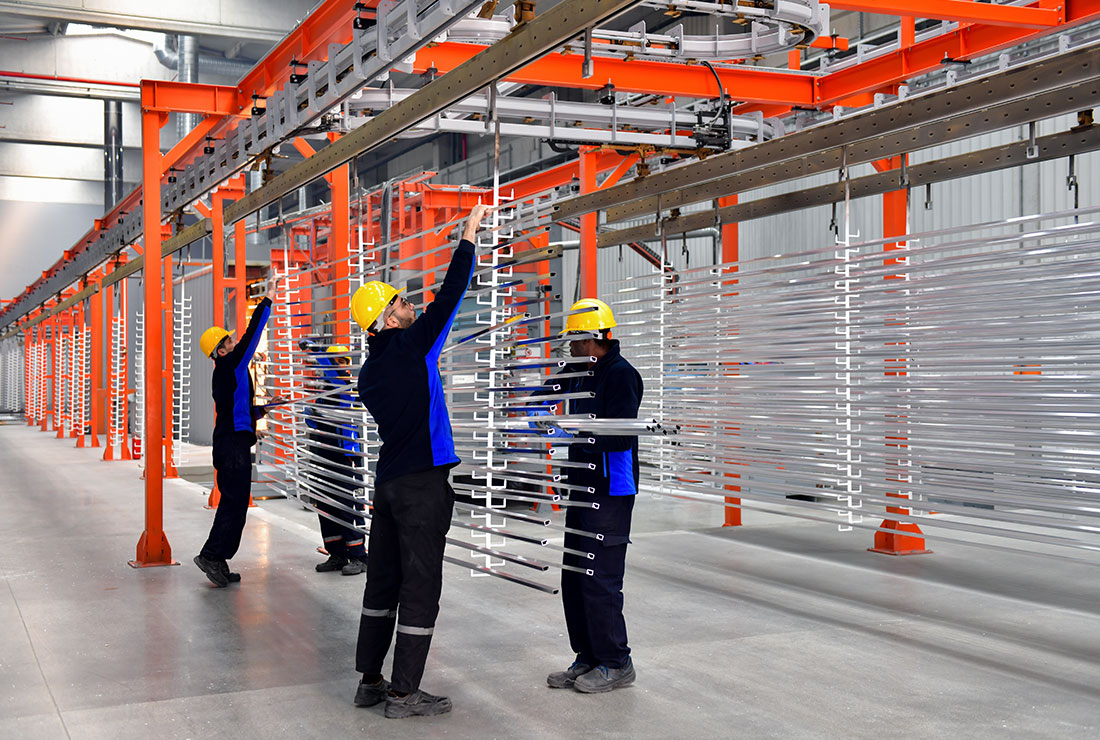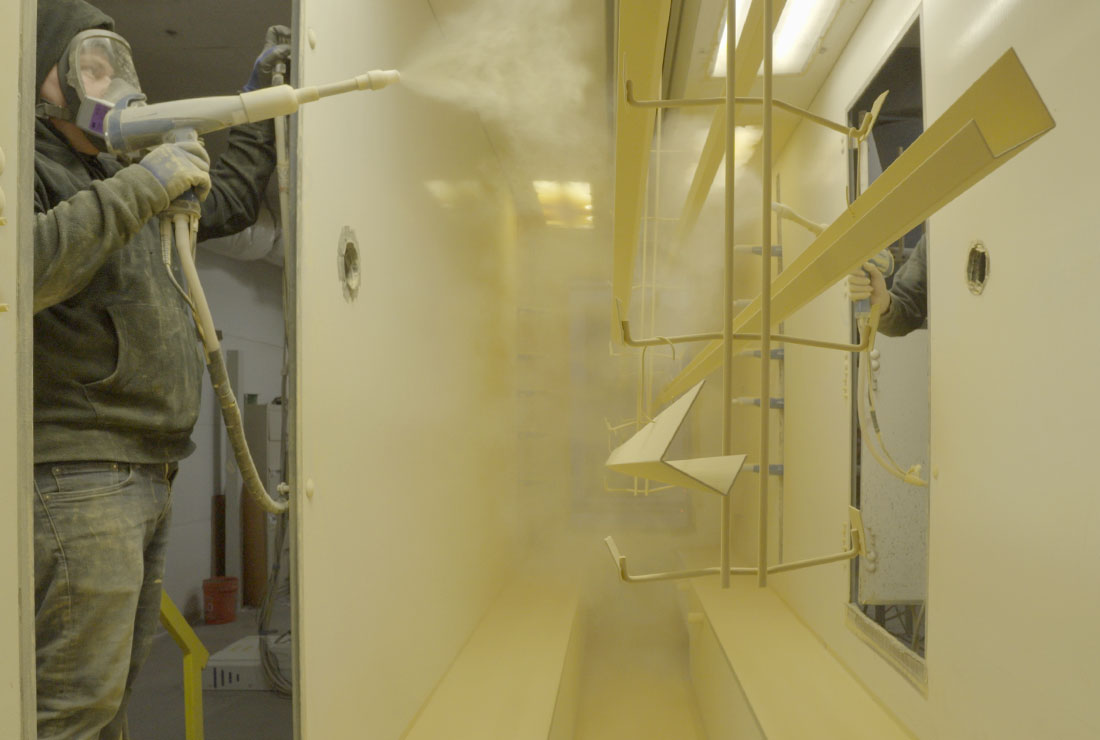
01 Oct The Surface Story: Why Powder-Coated Metal Wins in Design and Durability
In architecture and interior design, every surface matters — not just for looks, but for longevity, performance, and integration. At Astro, we view powder-coated metal as a sophisticated design tool: one that delivers beauty, durability, and versatility all in a single finish.
What Is Powder-Coated Metal?
Powder coating is a dry finishing method where a powdered polymer (thermoplastic or thermoset) is electrostatically applied to a metal surface, then cured by heat to form a solid, hard shell. Because it doesn’t rely on liquid solvents like traditional paint, it’s more environmentally friendly and develops a finish that resists fading, chipping, corrosion, and wear.
This makes it ideal for architectural metals, especially in environments where surfaces are touched often or exposed to elements.
Why Powder Coat Is an Excellent Choice for Architectural Metals
1. Exceptional Durability
The finish is thick and uniform — protecting substrates like aluminum, steel, or copper from abrasion, moisture, and UV damage. For high-traffic interiors, facade elements, and exterior metal accents, this protective robustness matters.
2. Vast Design Flexibility
Architects and designers can choose from:
- Matte, satin, gloss, or high-gloss sheens
- Metallic and textured finishes
- Custom color matching (RAL, Pantone, or proprietary palettes)
- Finishes that mimic brass, bronze, or stainless without the maintenance demands
The design freedom allows for continuity across metal features — whether in a lobby wall, ceiling panels, grilles, or decorative elements.
3. Ease of Maintenance
Powder-coated surfaces are easy to clean and resist fingerprints, smudges, and minor surface wear. That makes them well suited to elevator interiors, wall panels, millwork, metal partitions, and more — places where both aesthetics and hygiene matter.
“Powder-coating empowers our design partners to achieve precisely the color, texture, and durability they envision,” says Steve Paxton, President of Astro. “When we control both fabrication and finishing, we can deliver a final metal surface that meets aesthetic goals and stands up to daily use for years to come.”
Best Practices & Considerations
To ensure long-term performance and design integrity, consider the following:
- Surface prep is vital. Proper cleaning, degreasing, and pre-treatment (e.g. conversion coatings) ensure adhesion and reduce long-term failure risk.
- Mask strategically. Threaded holes, welded joints, and critical mating surfaces often need to remain uncoated, so planning is required.
- Mind the lead times. Custom colors or special texture effects may add extra processing time — early planning pays off.
- Coordinate tolerances. Because powder adds thickness, allow for the finished dimension in tolerance stacks, clearances, and interface with adjacent materials.
At Astro, we guide design teams through every step—from material consultation to finish selection and detailing—so the final product reflects both vision and durability.
Applications We Love
We frequently see powder-coated metals specified in:
- Retail interiors (fixtures, brand-colored elements)
- Corporate and office environments (accent walls, grilles, columns)
- Hospitality (feature walls, decorative screens, lighting housings)
- Custom millwork elements (metal-clad cabinetry, floating panels, trim)
Because Astro controls fabrication and finishing internally, we deliver consistency and quality across each custom piece.
This fusion of aesthetics and performance is central to Astro’s approach.



